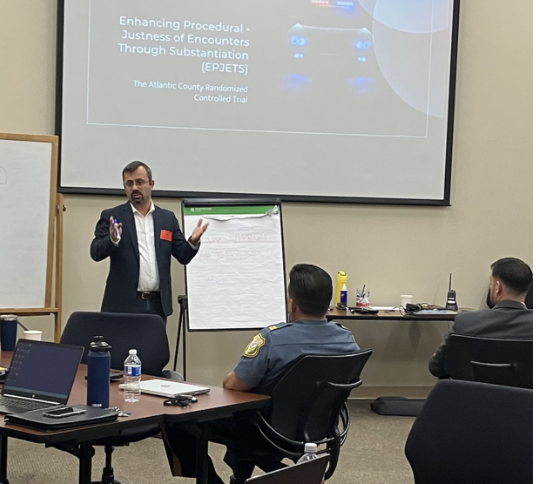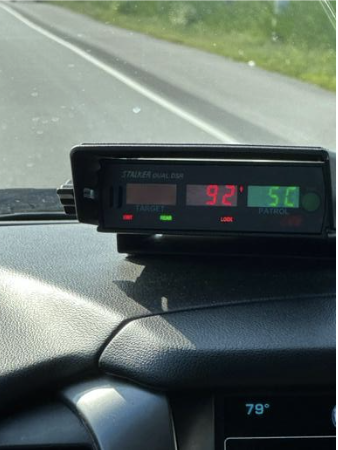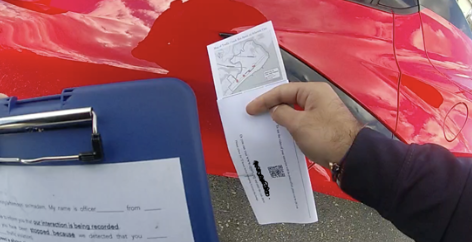
What is EPJETS model?
The EPJETS (Enhancing Procedural Justness of Encounters Through Substantiation) model is an intervention aimed at improving the trust and confidence of the public in police agencies during traffic stops. This model is based on principles of procedural justice and evidence-based policing, and it includes several key components:
-
Data-Driven Deployment: The model uses traffic crash data to identify high-risk locations for traffic crashes. Officers are then deployed to these high-risk areas to conduct traffic stops, which are intended to enhance traffic safety.
-
Procedural Justice: During traffic stops, officers are trained to communicate the purpose of the stop in a manner that is transparent, respectful, and fair. This involves explaining the reasons for the stop, listening to the motorists, and providing them with an opportunity to voice their opinions.
-
Body-Worn Cameras (BWCs): Officers use body-worn cameras to record their interactions with motorists. Providing access to this footage can enhance citizens' perceptions of police professionalism and transparency.
-
Feedback Mechanisms: Post-interaction surveys are used to gather feedback from motorists about their perceptions of the traffic stops. This helps in assessing the impact of the EPJETS model on public trust and compliance.
-
Training and Support: Officers receive specialized training in de-escalation and communication skills. The training is often conducted by experienced trainers and may involve the use of natural language processing (NLP) models to ensure adherence to the protocol.
-
Community Engagement: Officers educate motorists about traffic safety and the reasons behind traffic enforcement, demonstrating the police's commitment to the community's well-being.
The EPJETS model aims to create a more positive interaction between the police and the public, thereby improving compliance with police directives and enhancing overall community trust. The model has been evaluated through rigorous research methods, including randomized controlled trials (RCTs), to ensure its effectiveness and reliability.

How was the model developed? Does it work?
The EPJETS protocol has been developed by a team of researchers led by Dr. Nusret Sahin to enhance citizen attitudes and trust in the police during traffic stops. It is an innovative interaction strategy that involves practicing procedural justice through a scripted message, presenting drivers with evidence of where most traffic crashes/fatalities occur, informing them about the locations that are at high risk for traffic crashes, recording interactions, and giving them access to video footage. Research evidence demonstrates that the EPJETS protocol positively impacts compliance, increases citizen satisfaction with policing services, improves perceptions of police professionalism, and enhances trust and confidence in a police department.
What are the foundational principles of the EPJETS model?
Key components of the EPJETS model include:
-
Impartiality: The process is unbiased and does not favor any particular individual or group.
-
Consistency: Procedures are consistently applied across different situations and cases.
-
Accuracy: Decisions are based on accurate and reliable information.
-
Representation: All relevant stakeholders have the opportunity to participate in the decision-making process.
-
Ethicality: Procedures adhere to ethical standards and principles.
-
Transparency: The process is open and understandable to all involved parties.
-
Voice: Individuals have the opportunity to express their views and concerns during the process.
-
Engage/Educate: Maximize the opportunity to engage with citizens and educate them about the risks associated with being involved in criminal/disorderly behavior.
|

|
The EPJETS research suggests that the usage of the EPJETS protocol fosters trust, cooperation, and compliance with decisions and rules. Conversely, perceived procedural injustice can lead to dissatisfaction, resentment, and even resistance.

What was included in the EPJETS script?
In our protocol, we focused on the key elements of procedural justice: dignity and respect, neutrality and fairness, trustworthy motives and voice. These elements were incorporated into the script used by police officers. Trustworthiness was displayed through explaining traffic crash data statistics, and transparency through informing citizens that their current interaction was being recorded and that they were able to access this footage if they would like to. Neutrality and fairness were shown in the script by explaining the reason for the stop and the goal behind traffic enforcement. As the police officers asked for the driver’s information, for instance, license and registration, and wished them a safe trip, they displayed the elements of dignity and respect. Lastly, officers would ask citizens if they knew how traffic enforcement operations were conducted and if they should continue this enforcement - allowing citizens their voice.

How were the key messages in the script communicated?
In our protocol, we prioritized fundamental aspects of procedural justice: dignity and respect, neutrality and fairness, trustworthy motives, and giving voice. These principles were integrated into the guidelines followed by police officers. Trustworthiness was demonstrated by explaining traffic crash data statistics; transparency by informing citizens that their interaction was being recorded and offering access to the footage upon request. The script underscored neutrality and fairness by explaining the purpose of the stop and the goals of traffic enforcement. When officers requested driver information such as license and registration and wished them a safe journey, they exemplified dignity and respect. Lastly, officers engaged citizens by asking about their familiarity with traffic enforcement operations and seeking their input on whether such enforcement should continue, thereby giving them a voice.
About
- Purpose: The EPJETS project aims to enhance citizen relations through positive interactions and accountable policing practices.
- The goal of this project is to enhance police-citizen interactions by improving communication and accountability police practices. This project strives to assess whether releasing body worn camera (BWC) footage of police-citizen interactions. Utilizing a procedural justice script, and overall informing police duties, responsibilities, and practices, will strengthen how citizens perceive the police
- Main goals: To evaluate whether AC and Pleasantville police officers can enhance perceptions of legitimacy through the EPJETS model during a short, police-initiated encounter; To provide police departments in the US with the needed guidance and clear procedures for incorporating both procedural justice and BWC technology into the workings of the department; To improve citizen cooperation with law enforcement agencies.